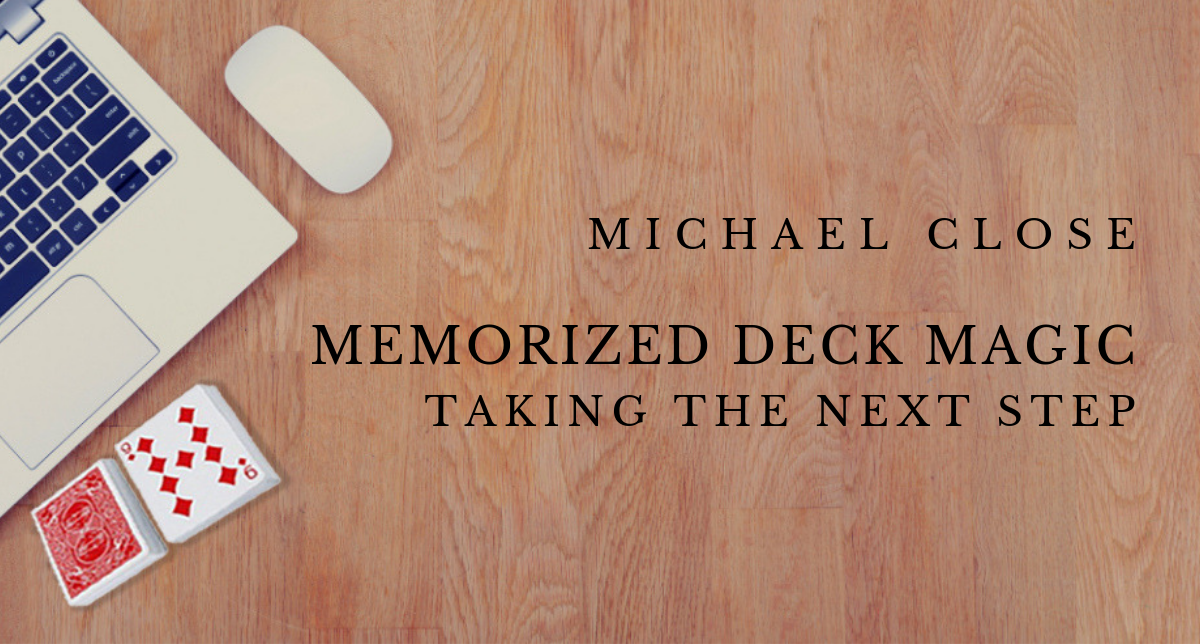
Memorized Deck Magic - Taking the Next Step
Although I was familiar with Simon Aronson’s stack (which I purchased when it was released in 1979), I did not memorize it until the summer of 1990. My motivation for learning it was based on two things: a Juan Tamariz lecture in St. Louis, during which he performed Mnemonicosis; and the (unfortunately) vague descriptions of Bert Allerton’s memdeck effects in The Close-up Magician. Concerning memdeck magic, The Close-up Magician contains this salient point: “The reason the stacked deck tricks impressed people as being on a plane entirely beyond that of the usual card trick was because instead of being asked to select a card, they were required to merely name a card.”
When the time came to learn Aronson, I already knew exactly how I wanted to exploit a memorized deck. I was going to have spectators name cards and then reveal them in an improvisatory manner; consequently, I developed repertoire that helped me hone the necessary skills.
I would conjecture that many magicians hop on the memdeck bandwagon without having a clear idea of how they are going to use this tool. They learn a stack and they avail themselves of the built-in effects and the various (and often ingenious) card locations and divinations possible. But then, they want to make the jump from “take a card” tricks to “name a card” tricks. This is what I have termed, “Taking the Next Step.” Many discover, to their chagrin, that the next step leads them straight into the deep end of the pool.
When you start a trick by asking a spectator to name a card, every action that follows will fall under close scrutiny. What makes a trick like The Invisible Deck so strong is that after the spectator names the card, the magician (apparently) doesn’t do anything. The deck is removed from the card box, the cards are spread face up, and the named card is shown to be the only reversed card in the deck. Fortunately for us, The Invisible Deck does all the work. Performing named-card miracles with an ungaffed (but stacked) deck places great demands on our technique. We need a broad knowledge of sleights, and we need to be able to do those sleights with a high degree of competency.
It is at this point that many magicians get overwhelmed. My goal with the “Memdeck – The Next Step” webinar is to provide you with a pathway through this labyrinth by suggesting a core group of sleights and some excellent effects that utilize them. This will allow you to perform with confidence, and this confidence will encourage you in your progress toward memdeck mastery.
I hope you’ll join me on Sunday, June 23, 2019, for this special webinar. For more information, go here: https://www.michaelclose.com/
Heading
+29.000 people love our product

Leave a comment